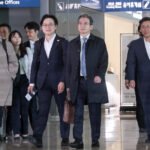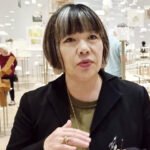LIG NEX1’s missile defense system on display (Courtesy of Yonhap)
South Korea will deploy a new air defense system, similar to Israel’s Iron Dome, against North Korea’s artillery attacks earlier than its previous plan amid increasing tensions around the heavily fortified border with North Korea.
South Korea’s Defense Acquisition Program Administration (DAPA) announced on Monday that it nodded to a plan to move up a timeline for fielding the country’s low-altitude missile defense (LAMD) system by two years to between 2029 and 2033 at a National Defense Ministry committee meeting.
The LAMD deployment was originally planned between 2031 and 2035.
The LAMD system, also called the “Korean Iron Dome”, is designed to protect Seoul against long-range missile attacks from Pyeongyang. It comprises a radar, engagement control center, launcher and interceptor missiles.
The change in the LAMD deployment schedule comes at a time when tensions on the Korean Peninsula have increased following a series of Pyeongyang’s trash-filled balloon attacks on Seoul, home to about half the South Korean population of 52 million, in response to propaganda leaflets-filled balloons from South Korean activists groups.
Tensions have hiked further since last week after media reports that North Korean soldiers have joined the Russian army to combat against Ukraine.
HIGH TENSIONS
The DAPA also approved a plan to upgrade South Korea’s Patriot missile defense system for 1.9 trillion won ($1.4 billion) by 2031 by acquiring the enhanced Patriot Advanced Capability-3 (PAC-3) missile defense system.
The original plan was to spend 750 billion won by 2027 to reform PAC-2 launchers to launch the PAC-3 system.
“We have decided to buy more Patriot missiles and upgrade more (PAC-2) launchers in response to heightening threats from North Korea’s ballistic missile attacks,” said an unnamed DAPA official.
LIG Nex1’s M-SAM II (Courtesy of LIG Nex1)
North Korea is believed to have stationed thousands of artillery systems within range of major South Korean population centers, including Seoul, which lies only 35 miles from the Demilitarized Zone separating the two Koreas.
The LAMD is a lower-tier segment of South Korea’s broader Korea Air and Missile Defense (KAMD) system that will be built to protect the country from various threats from North Korea.
KOREAN TRANSMISSION FOR THE K2 BATTLE TANK
The DAPA also gave the green light to a plan to equip the country’s next-generation main battle tank, the K2 Black Panther, with locally developed transmissions.
Under the new plan, 150 units of the K2 tank that will be supplied to the South Korean army will be fitted with South Korea’s homegrown transmissions alongside Korean engines.
Currently, K2 tanks are powered by a Korean-made engine and a German transmission.
The same Korean transmission by SNT Dynamics Co. will also be exported to Turkey to be employed in the Middle Eastern country’s Altay battle tanks.
The South Korean government has been striving to make the country one of the global military power nations by bolstering the country’s weapon exports.
Since Russia’s attacks on Ukraine, many European countries have scurried to fortify their military systems, and South Korea has become one of the major weapon exporters to them.
By Sang Hoon Sung
uphoon@hankyung.com
Sookyung Seo edited this article.















